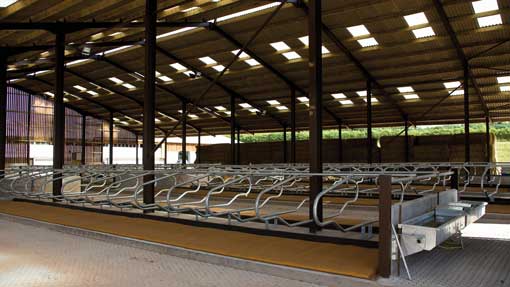Invest dairy profits wisely to boost business efficiency

Producers looking to invest some of their hard-earned cash could take advantage of the AIA increase to prepare for rainy days while milk price remains strong. Tony Evans writes
Spring has arrived with the sun shining and grass growing well, closing the 2013-14 financial year in a much more positive place than when it began.
Milk prices are still holding up well, with the DEFRA average rolling milk price of 32.25p/litre in February 2014 showing an increase of 4.01p/litre, compared to the previous February.
In addition to higher milk prices, lower input costs have increased profits (after recovering from spring 2013) for dairy businesses in the UK, giving many farmers a good return on their investments in their business.
So what should you do with your extra return? As soon as this extra return starts to accumulate in your bank account, it is inevitable that your popularity with salesmen will increase.
Before investing your extra profit in new “miracle” products and gadgets, think to yourself: will the extra cost of these products improve my profits further? If the answer is no, then it is time to politely show the salesman the door and close it swiftly behind them.
The coalition Budget, announced on 19 March, doubled the Annual Investment Allowance (AIA) from £250,000 to £500,000 to encourage businesses to invest in plant and machinery.
This is only a short-term increase, as the AIA will be reduced back to £25,000 after 31 December 2015. With costs of milk production in the UK currently among the lowest in Western Europe, this additional allowance does not mean that surplus cash should be squandered on additional machinery, or plant that will increase costs of production and the long-term running costs of the business.
Average Rolling Milk Price
Historical trends in the UK milk price suggest the current milk price may be reaching its peak and it is therefore unlikely that milk prices will be maintained at their current levels in the long-term future.
The AIA may also give businesses a chance to make some long-term investments now to improve their efficiency, such as sufficient slurry storage to be NVZ compliant or simple parlour feeders to allow the sale of a feeder wagon and the tractor that pulls it and the loadall that fills it, while surplus cash is available in the business.
For more advice from Tony Evans visit
Profitable businesses should not make any extreme changes to their management systems, stick to what you’re good at. This does not mean that you should not look to expand your business, just ensure that you do it within your own ability and without increasing the overall costs of production for the herd.
Which way for you?
On the assumption that you know your costs of production you may conclude that if interest rates rose by 3-4% and your business became less viable then it will pay to use your hard earned cash to reduce your debt.
Alternatively your debt level may be low, in which case you may want to grow your business. If you already have a successful business, the most efficient way of expanding your business would be to do more of what you are already doing – that is, increase your herd numbers without increasing costs of production.
For some farm businesses the AIA will present a good opportunity to modernise a farm business to plan for future succession, building a new parlour or extending and updating existing plants or bulk tanks.
Any capital investments made should produce at least a 10% return (after depreciation) and a sensitivity analysis should be included in business plans to include “worst case scenarios” of reductions in the milk price and increases in input costs.
Whatever you decide to use your hard earned cash for, help your business prepare for the rainy days ahead while the sun is shining now.
